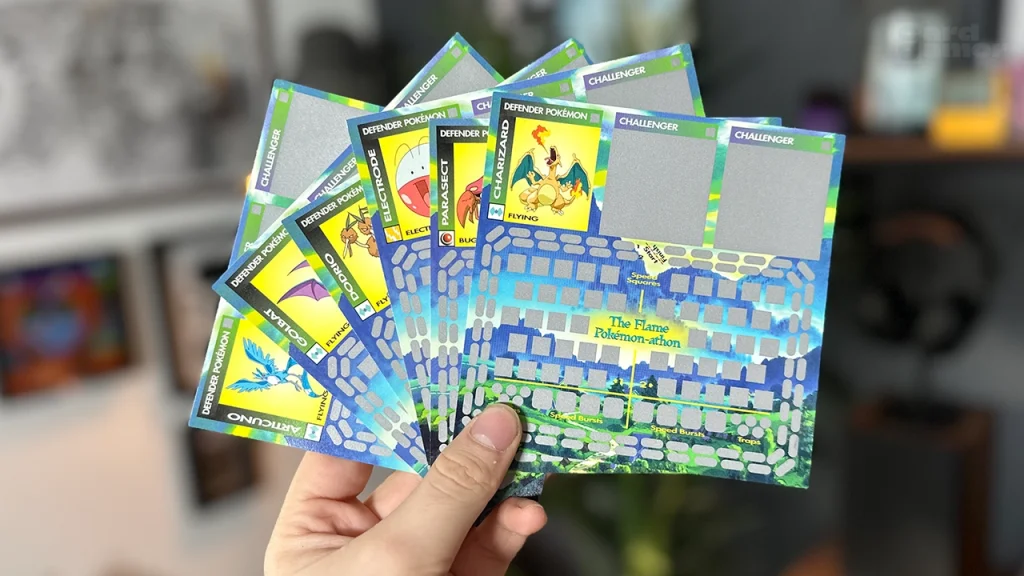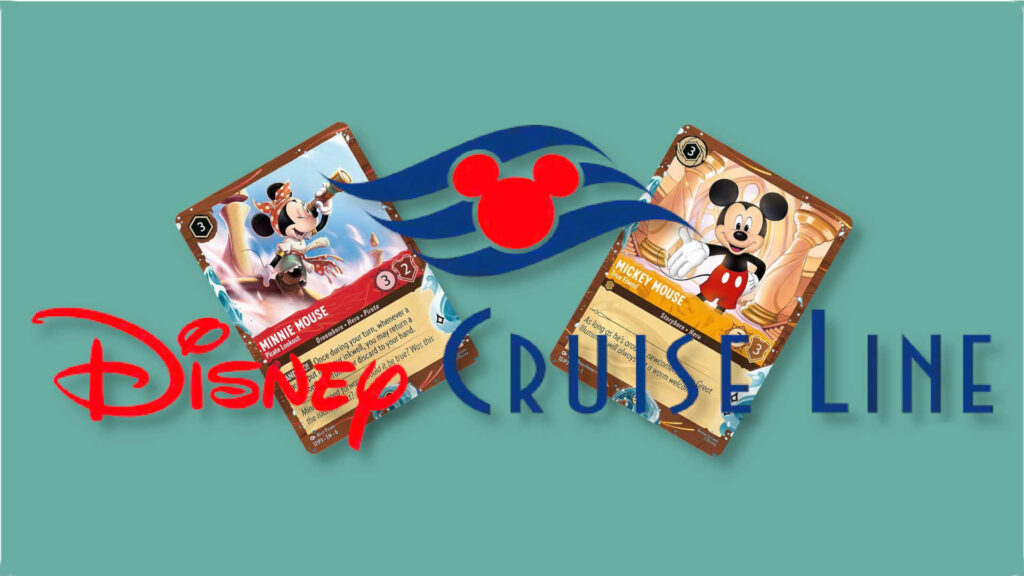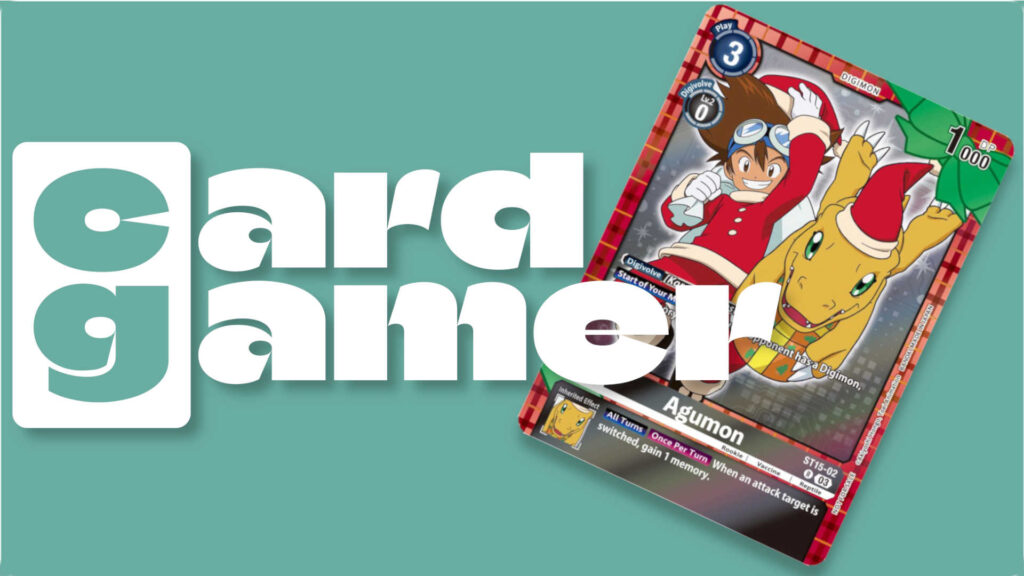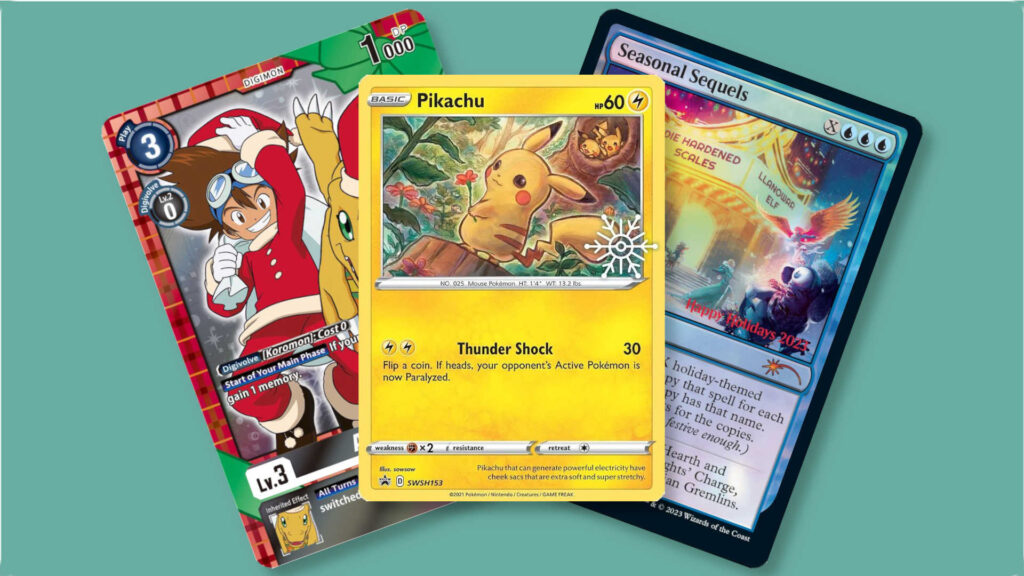Though known in more mainstream circles as the company behind the long running How To Host A Murder series of games (which originally launched way back in 1985), Decipher, Inc have perhaps been best known to gamers as the publisher behind numerous collectable card games (CCGs) in the 90s and beyond.
Decipher becoming heavily involved in the lucrative, mid-90s CCG market developed in an unusual way.
They had bought the license to produce the Go-style game Pente from Parker Brothers and two of the game’s world champions – Tom Braunlich and Roland L. Tesh – recognised the opportunity in CCGs.
Braunlich and Tesh approached Decipher with their idea for a licensed CCG in 1993; by the end of the year, Decipher had acquired the Star Trek license for this purpose, having already produced a Trek-themed How To Host A Murder title in 1992, albeit rebranded to How To Host A Mystery.
The following year, the company published Star Trek: The Customizable Card Game, which was a huge success for them.
So much so that they went on to quickly acquire the rights to, and release, a Star Wars CCG in 1995.
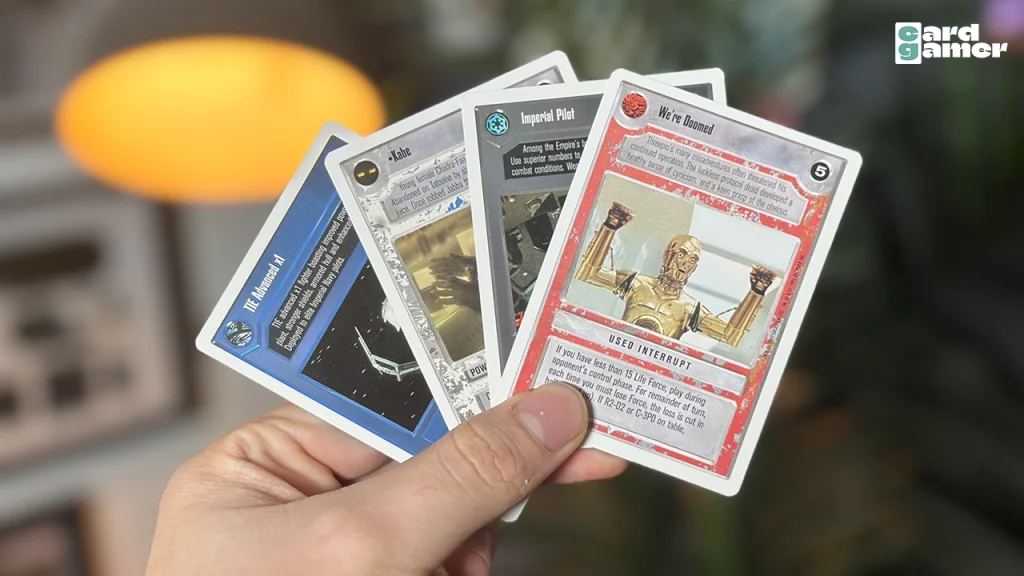
Both were extremely popular and long running, seeing Decipher expanding further into the CCG market with, it must be said, often diminishing returns.
Though other Star Wars-related CCGs from Decipher didn’t have the appeal or staying power that the original had (the 1995 game is still, incredibly, plays host to tournaments to this day), they still saw reasonable success with games such as The Lord of the Rings Trading Card Game and the Mega Man NT Warrior Trading Card Game.
Though further forays into licensed CCGs weren’t always well judged; Decipher’s Austin Powers CCG immediately springs to mind.
Yet before they dived into the deep waters of CCGs and TCGs, Decipher also released a card-based game that was around for many years: Scratchees.
So, what were Scratchees?
If you’ve ever bought a lottery scratchcard, you’ll be familiar with the concept behind Scratchees – though there were no cash prizes on offer for success with Decipher’s silver coated cards!
Originally released in 1989, Scratchees weren’t the first non-gambling, game-style scratchards. So let’s take a look at a brief history of the trading card sets that preceded Scratchees!
Table of Contents
ToggleFleer and Topps Scratchcard Trading Card Sets: 1980-1989
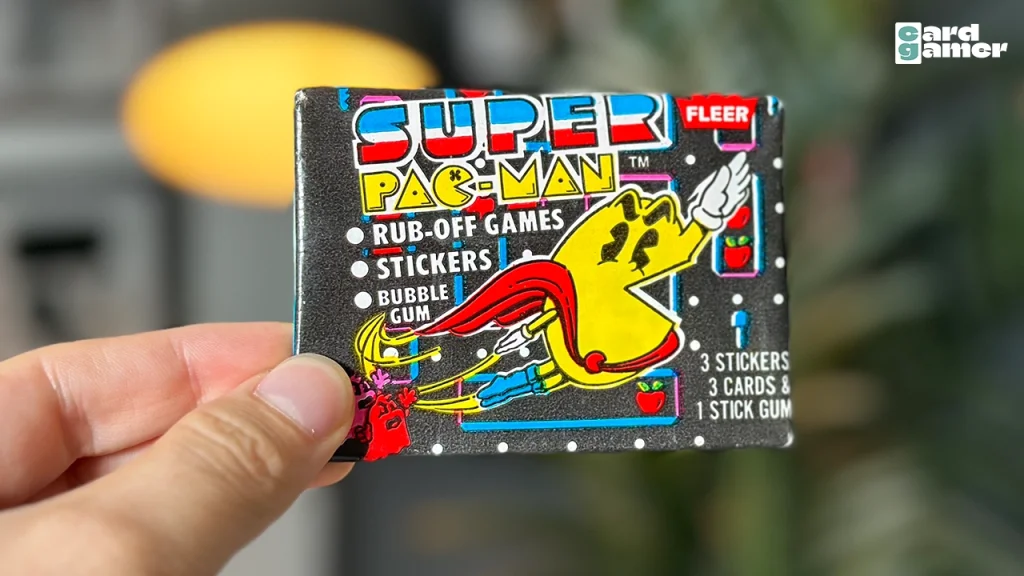
Starting in 1980, Fleer released several Pac-Man related trading card sets, with each pack containing stickers, bubblegum and scratch-off game cards.
Topps produced a Donkey Kong set, which seemed to very closely mirror the ‘gum, stickers, scratchcard’ formula of the Pac-Man card packs from Fleer.
In 1983, Fleer produced an excellent Dragon’s Lair set with its own stickers and scratchcards, based on the visually stunning, Don Bluth-animated LaserDisc arcade game.
Topps also revisited the scratchcard format in the same year, with their Video City set – this time, featuring game cards based on four different arcade titles: Donkey Kong Junior, Frogger, Turbo and Zaxxon.
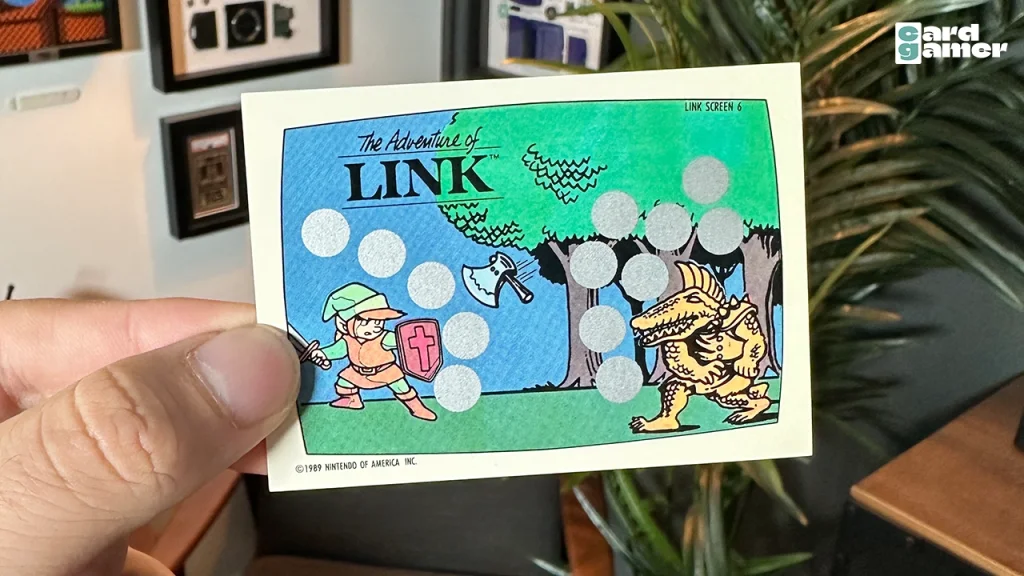
Jumping forward to 1989, Topps released what is perhaps the piece de resistance when it came to video game related, scratchcards/stickers/gum packs: the Nintendo Game Pack.
The scratchcards this set contained featured six iconic games: Double Dragon, The Legend of Zelda, The Legend of Zelda II, Punch Out, Super Mario Bros and Super Mario Bros 2.
Though all of these trading card sets were excellent, the size of the cards meant that the interactive scratchcard element was small and short lived.
Scratchees Wave 1: 1989
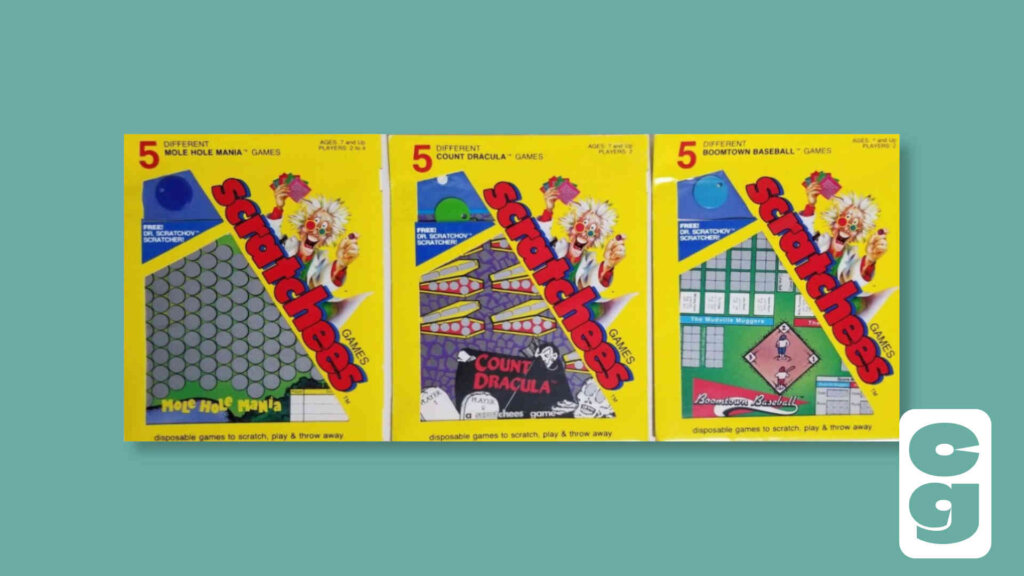
In the same year the Nintendo Game Pack sets were released, Decipher released a dedicated line of scratchcard games: Scratchees.
These were much bigger cards; shorn of the trading card format’s size, they were able to offer more visually interesting, slightly more complex and even multiplayer experiences.
Each Scratchees pack contained five cards, with the first 1989 sets comprising a selection of six different games to choose from.
The packs also came with their own collectable ‘coin’; a plastic disc featuring the series mascot, Dr. Scratchov.
The games released in 1989 were as follows, in alphabetical order: Battle Fleet, Bermuda Triangles, Boomtown Baseball, Count Dracula, Mole Hole Mania and Treasure Hunt.
Let’s take a closer look at each of them.
Battle Fleet
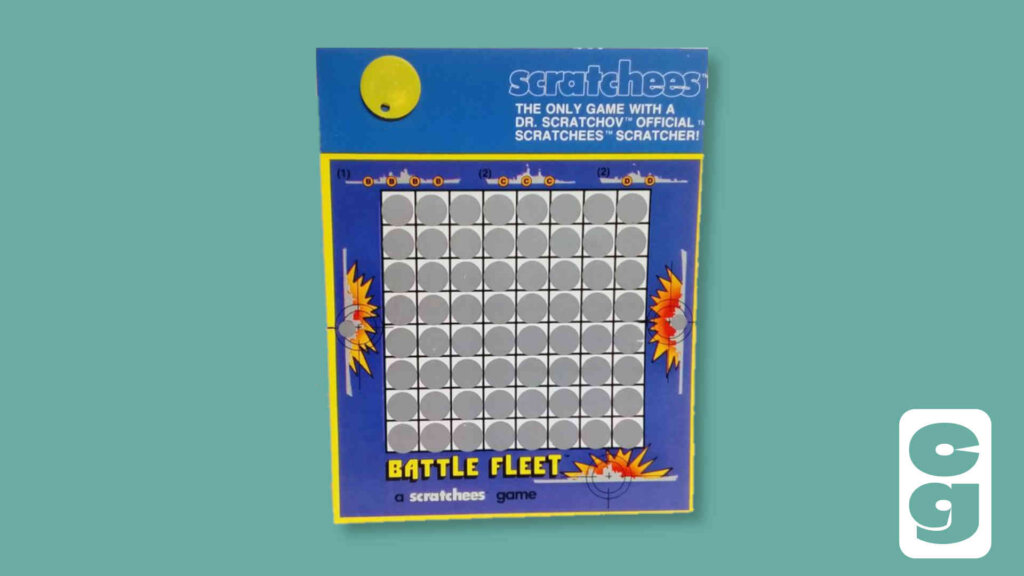
If you’d started your Scratchees journey with Battle Fleet, you might have been a bit underwhelmed.
There’s nothing wrong with it, per se – but it is basically just Battleships, with two players competing to be the first to sink the other’s fleet.
Mines add a bit of spice, as they explode all spaces around them when revealed, but aside from those and the chance of revealing one of your own ships when you play, there’s not much here that can’t just be done with a pen and paper!
Bermuda Triangles
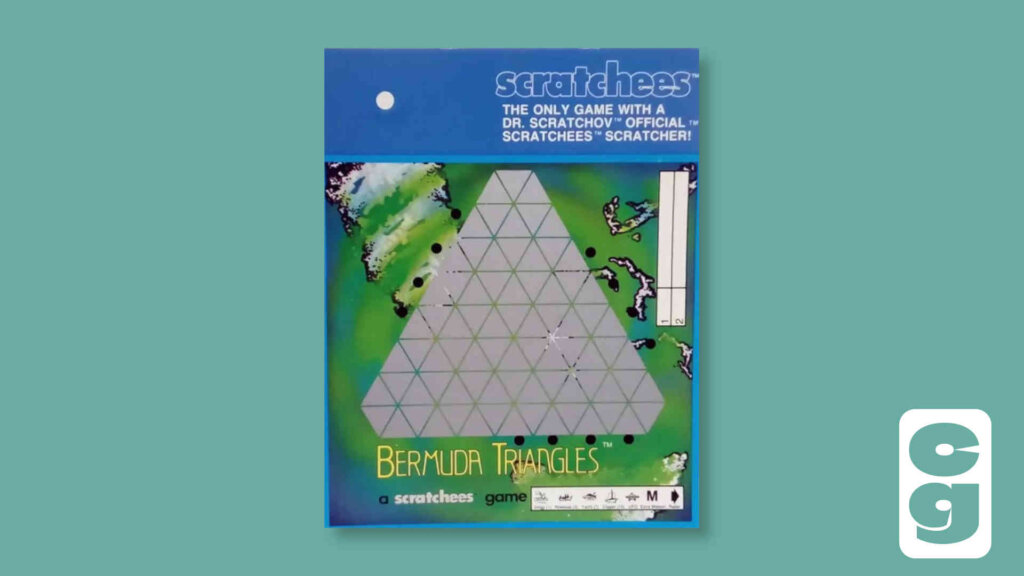
This one is much more interesting; a game for one or two players, you’ll send Coast Guard rescue helicopters out across the Bermuda Triangle to find survivors of an alien invasion.
There’s a neat push your luck element in either getting survivors straight back to base when found or pushing ahead to find more, at the risk of being zapped out of the sky by a UFO!
One player can take on six missions and aim for a high score of survivors, or two players can attempt three missions each and compete for the best score.
Boomtown Baseball
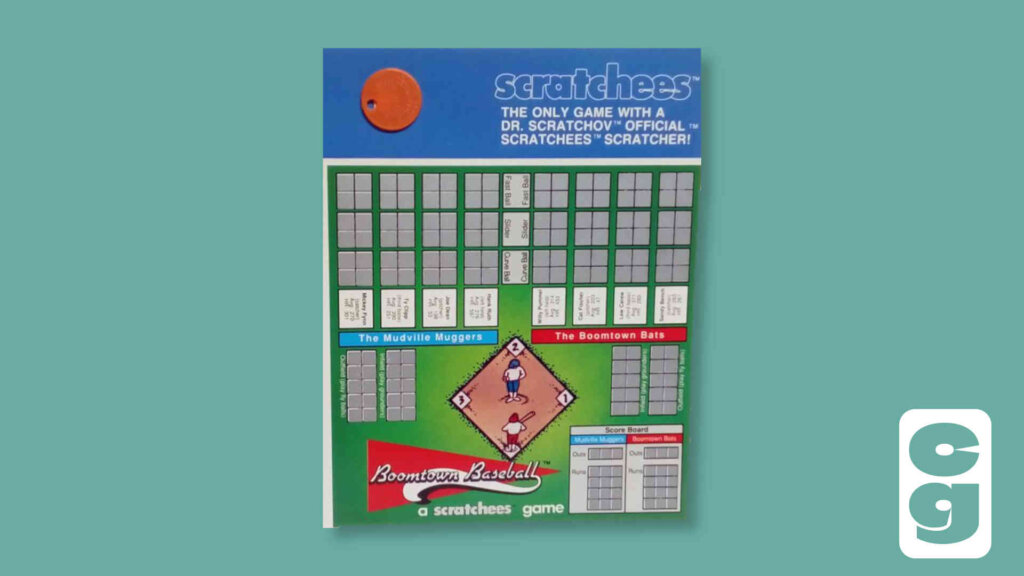
An impressively strategic game, considering it’s ‘just’ a scratchcard, Boomtown Baseball is a clever, two player adaptation of the popular American sport.
One player chooses a baseball pitch type and location, then the batting player chooses a panel to reveal.
The batter’s swing result can be a Home Run, Strike, Walk, Grounder or Fly Ball, with Grounder and Fly Ball resulting in a further box (in the Infield or Outfield, respectively) being scratched to determine the outcome.
The teams have their own specialists, so if you know the characters and what they’re good at, you can more easily prepare for what to throw at them next!
Count Dracula
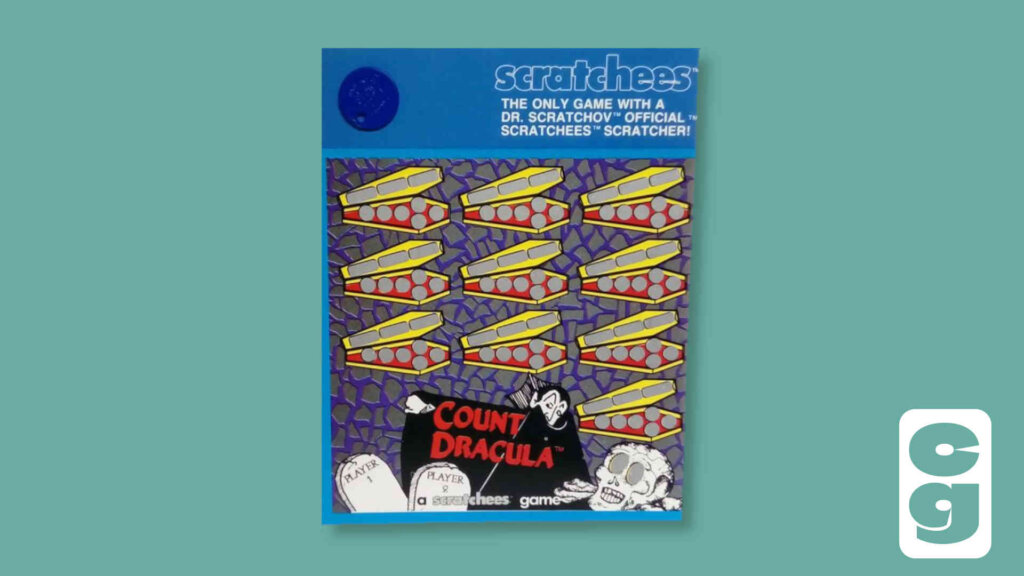
In this two player game, the players are treasure hunters, looting coffins for different coloured gems and hoping to walk away with the highest number in their chosen colour.
Spaces in coffins are scratched off in the hope of revealing either red or blue numbers (representing how many rubies or sapphires have been found), but these can’t be scored until the coffin is closed.
To close a coffin and claim the treasure in there, you’ll need to find the ‘close’ by scratching off a space in the coffin’s lid.
If you find a crucifix, the value of treasure found is doubled!
However, bats and Count Dracula himself lurk in the coffins; though the bats only cause you to end your turn, finding the titular vampire causes the coffin to immediately close and the unlucky player loses the value of treasure uncovered in that coffin too!
Mole Hole Mania
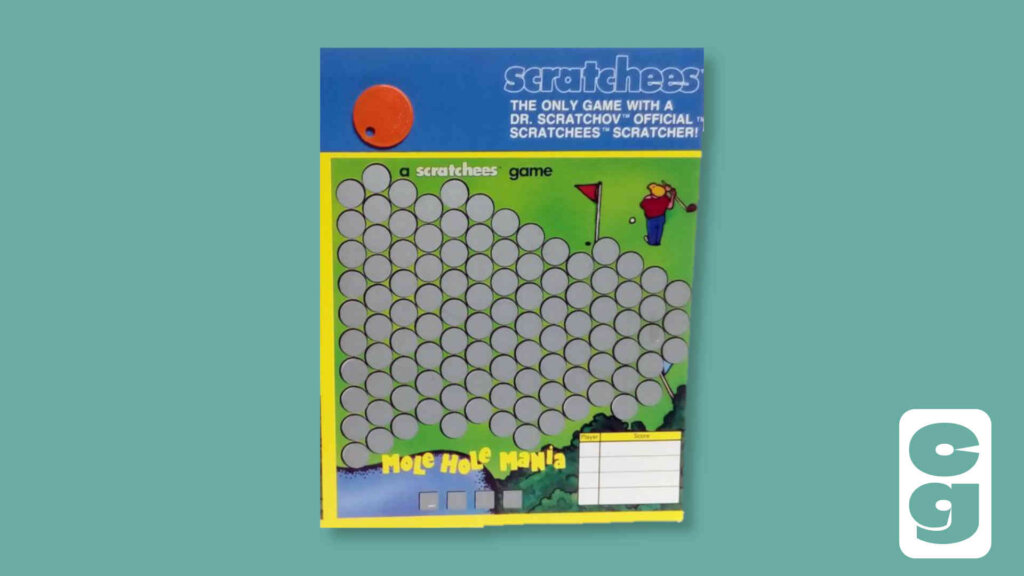
Ever wanted to be a golf course groundskeeper, hunting down pesky moles?
Well, in Mole Hole Mania, that’s exactly what you do!
Essentially an upgraded take on PC classic Minesweeper, in Mole Hole Mania there’s an absolute ton of stuff hidden under the golf course.
You might find snakes or mole poop (both of which cause you to miss your next turn), poison-covered golf balls that make you lose a point, empty holes (which do absolutely nothing!) or one of six differently coloured moles, each of which is worth five points when found.
Additionally, other helpful stuff can be uncovered, including dynamite (which blows up surrounding holes) and mole holes, mole meters or flashlights, each of which give you clues as to where moles are lurking!
It’s another fun design and a great use of the scratchcard format, which Scratchees prove can be surprisingly flexible and engaging.
Treasure Hunt
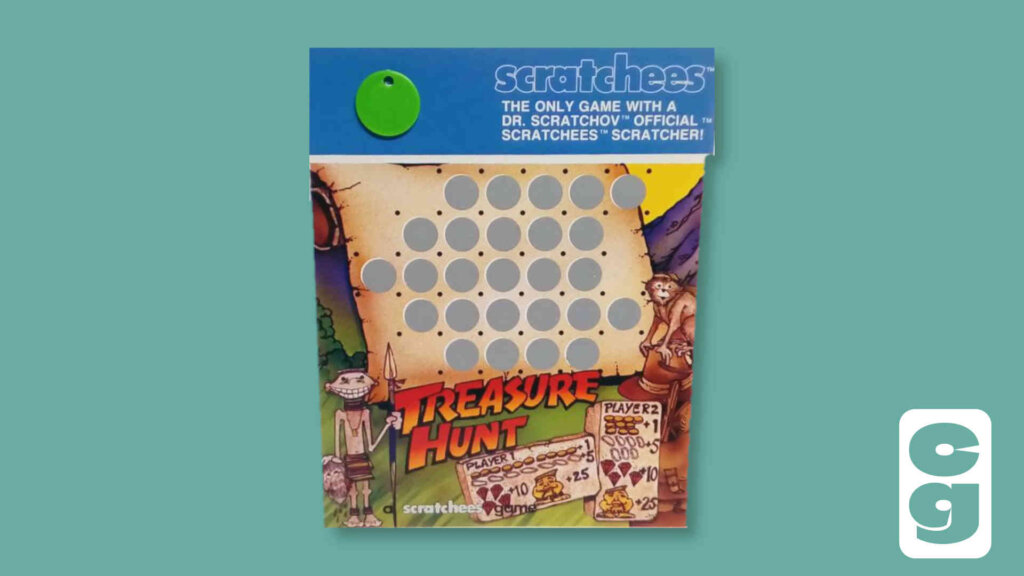
The last of the first wave of Scratchees to emerge in 1989, Treasure Hunt is a take on pen and paper classic Squares.
Players take turns drawing a line between two dots on the treasure map-style grid; as soon as they draw a line that completes a square, they get to scratch off the panel it encloses.
They may find one of numerous types of treasure, with each type worth a different number of points, to add to their haul.
Or if they’re unlucky, they’ll discover a culturally dubious head hunter (causing them to lose their turn) or a thief who’ll steal the most precious piece of treasure from their haul!
Scratchees Wave 2: 1990
Which leads us up to 1990, when the second wave of Scratchees were released.
In the second set, the games were Dinosaur Disaster!, Geekzilla, Mutant Parents from Planet Mars, Shark! Shark! and Suck Up The Slugs!
So what were these ones about?
Dinosaur Disaster!
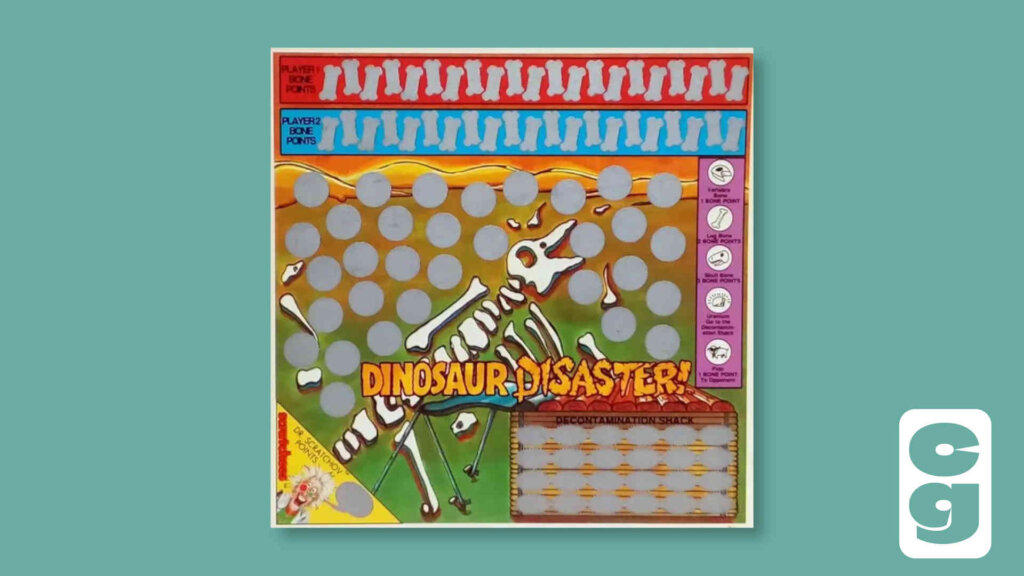
Two scientists are digging for dinosaur bones, each of which is worth a different number of points when found.
However, there’s also Uranium underground and your scientist must be decontaminated at the on-site shack if this is found.
The site’s dog can also be found lurking around the bones; if you uncover Fido, he’ll take a 1 point bone straight to your opponent!
The winner is the first player to collect 21 points worth of bones in this simple, very straightforward scratching game.
Geekzilla
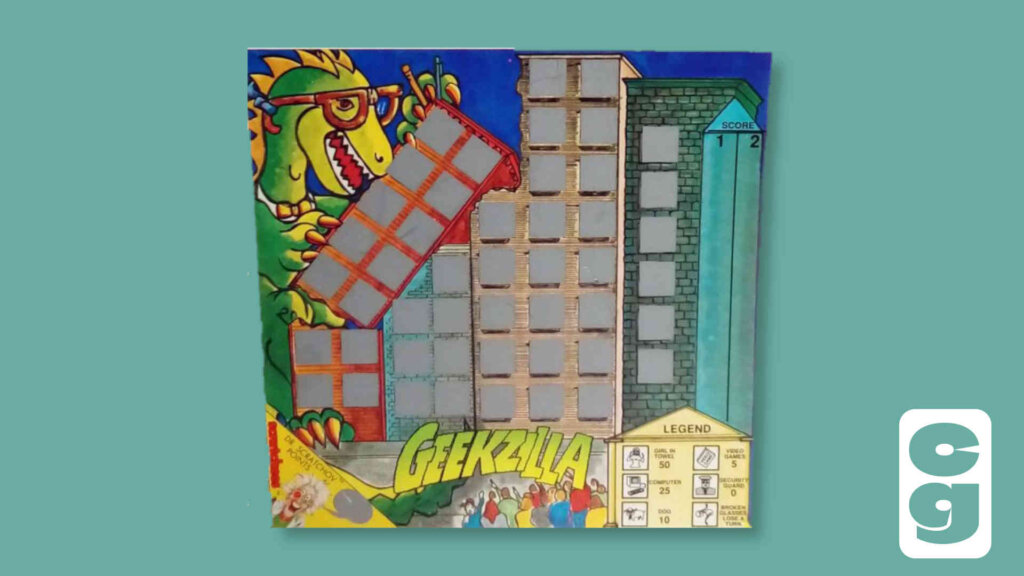
In this game, each player is an office worker who’s been turned into a kaiju!
Each player takes turns to smash windows on the city buildings, scoring points for finding different things within – though you’ll get none if you find a security guard, and lose a turn if you uncover broken glasses.
Why? Well, Geekzilla still needs to see, right? Growing to an unnatural size didn’t fix its sight or the need to wear glasses, of course!
After all windows have been broken, the player with the most points wins.
Mutant Parents From Planet Mars
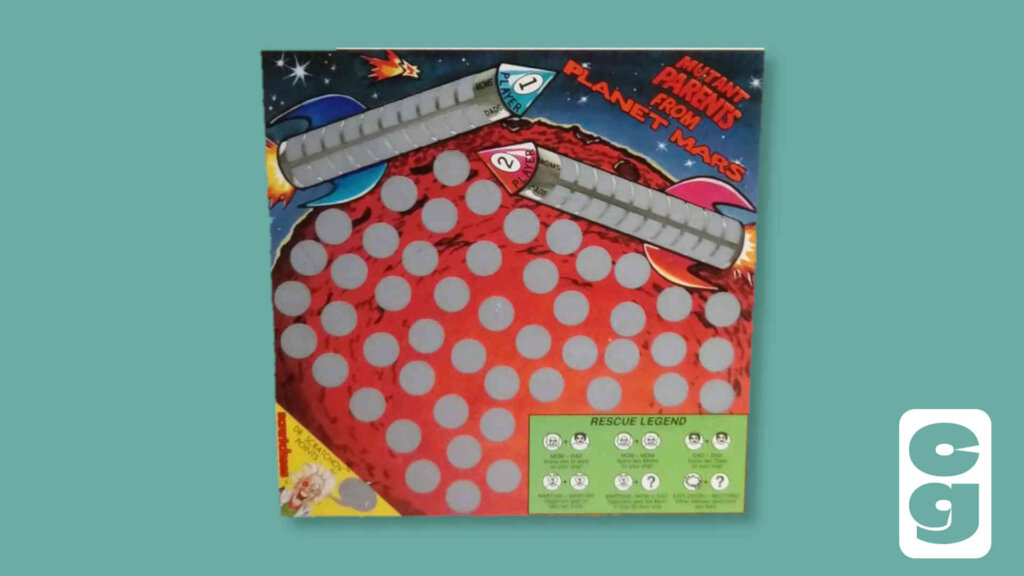
The title of this game is probably the most interesting thing going for it; though the Pairs-style twist does make it stand out a bit from the other games in the second series.
In this game, you’re competing with your opponent to rescue the most pairs of Moms and Dads from Mars.
Scratching off two panels at a time, you score based on the combination of symbols you find.
A Mom and Dad is a one point each and an extra turn. Two Moms or two Dads are worth two of the respective parent, as you’d expect.
If you find a Mom or Dad and a Martian, your opponent gets to score the relevant parent while you fight off the Martian.
Double Martians? That’s a missed turn while you’re busy fending them both off!
Though an Explosion destroys any other symbol you find, if you find two explosions it’s an extra turn as the Martians watch the ‘fireworks display’.
Unfortunately, as it’s (sort of) based on a game where you can go back to make pairs after uncovering certain cards, this one doesn’t work as well in the scratchcard format.
It’s not based on memory, it’s just random. Though the same can be said with all Scratchees to a certain extent, there are other elements in several of them that allow you to make educated guesses or push your luck, but that’s not the case in Mutant Parents From Planet Mars.
Shark! Shark!
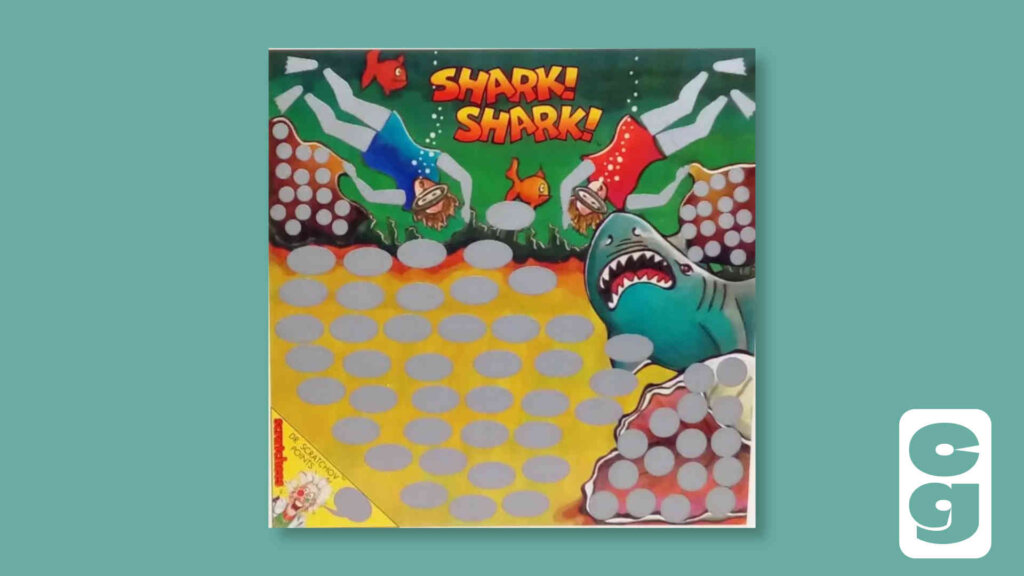
Diving for pearls in the ocean, players will need to collect 16 to win.
However, sharks are in the water; if you find one, they’ll bite off a limb. Lose all six limbs and it’s game over for your brave (or foolish!) diver.
This is another game that has Minesweeper-style clues as to where you can find pearls and a neat, separate Oyster area, which you scratch off to discover how many pearls you find when you uncover one in the sea.
The loss of limbs adds a dark vein of humour to this one for sure!
Suck Up The Slugs!
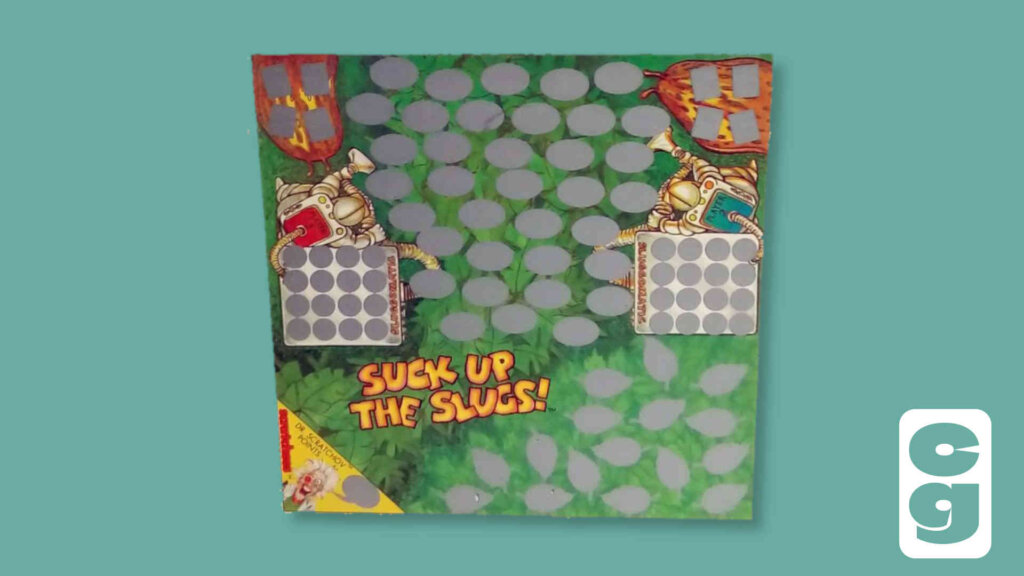
In Suck Up The Slugs!, scientists have discovered that Amazon slug-juice can give people superhuman powers, making the slugs who produce it worth thousands of dollars each.
This slightly convoluted backstory is just an excuse for another game where you’re attempting to find specific symbols and be the first to reach 16 points.
Slugs are what you’re after, of course, but you’ll only get them if you find a leaf. Once you do, you can then scratch a panel on the leaf pile to find out how many slugs you discover.
Sucking up a snail causes you to lose a turn while you clean your slug-sucker and finding slug slime gives you clues as to where slugs are hiding nearby.
Beware the Giant Amazon Mother Slug though; she will attack you, but you have four boxes of salt to defend yourself with. If you use all four and you find another of the giant slugs, you’re out of the game.
Cereal Box Free Gifts and More Scratchees: 1991
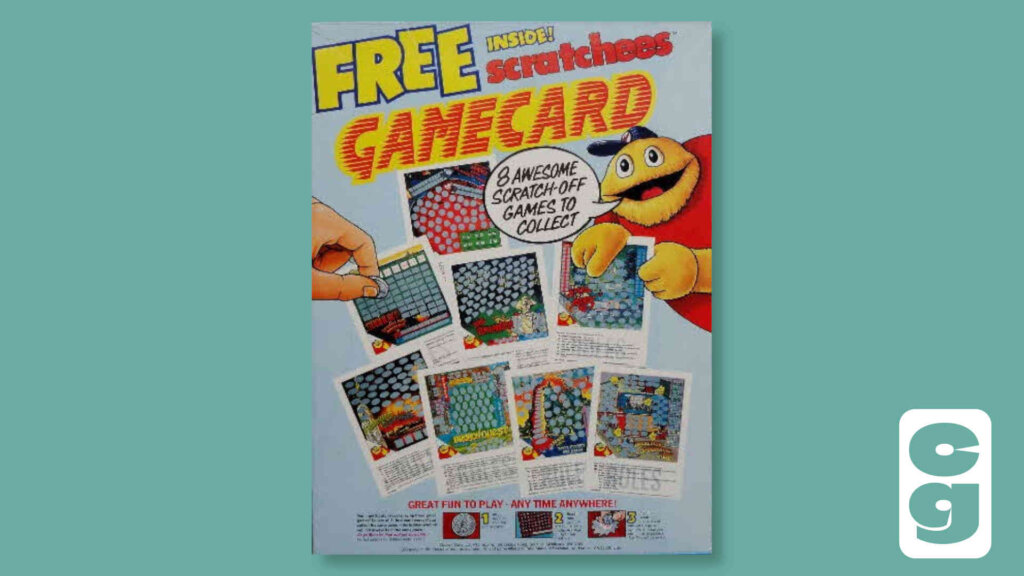
In the UK in 1991, one of eight different Scratchees game cards could be found in boxes of Sugar Puffs cereal.
As well as a smaller version of Mutant Parents From Planet Mars, there were original games too: Dragon Quest, The Eliminator, Escape From Volcano Island, Frankie’s Nightmare, Incredible Shrinking Kids!, Ninja Nerds and Sub Hunt: Search and Destroy!
These also made their way to the main Scratchees range with updated packaging, along with Attack of the 50 Foot-Frog!, Food Fight Frenzy!, Kamikaze Killer Bees and Vampire Substitute Teacher, but information seems to be pretty non-existent on these titles.
So that was it for Scratchees, for the most part; the first wave of games definitely seemed to be the most complex and adventurous overall. The ‘gameplay’, such as it is, when your main mechanic is scratching off panels on a card, felt just a little bit more satisfying in a number of those first games too.
Yet Scratchees did have one last gasp; true to form for Decipher, it’d take a popular licensed property to bring them back.
Pokemon Scratchees: 2000
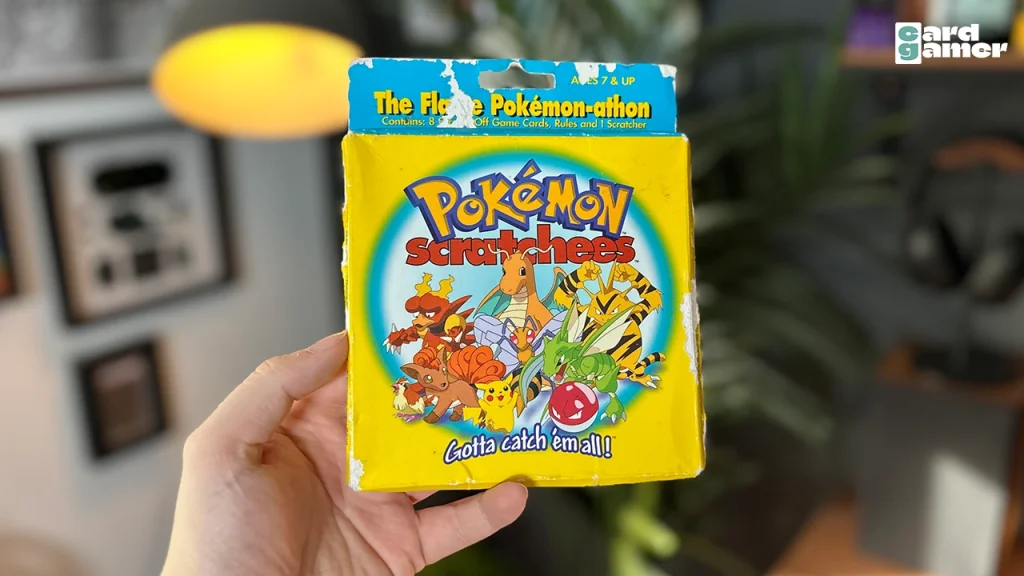
As we’ve covered, Decipher had quite the history with CCGs, being one of the most successful companies in the sector throughout the mid to late 90s.
Yet their position behind Magic: The Gathering, albeit with numerous CCGs rather than just one, was usurped thanks to numerous, non-US upstarts entering the market from Japan.
The first of these was Pokemon, which had already become a phenomenon in a different market segment, having secured popularity first as a Game Boy game and then, as an anime.
The Pokemon TCG was a huge success upon launch in 1999 (and is still going strong to this day); Decipher, already having their own slice of the CCG pie, sought to muscle in and get some Pokedollars of their own.
What better way to do that, if the TCG was already sewn up? Why, by revisiting Scratchees, of course!
Launching in 2000, there were three different versions of Pokemon Scratchees available: The Flame Pokemon-athon, Tower of Terror and The Ultimate Test.
Let’s take a look at each one!
The Flame Pokemon-athon
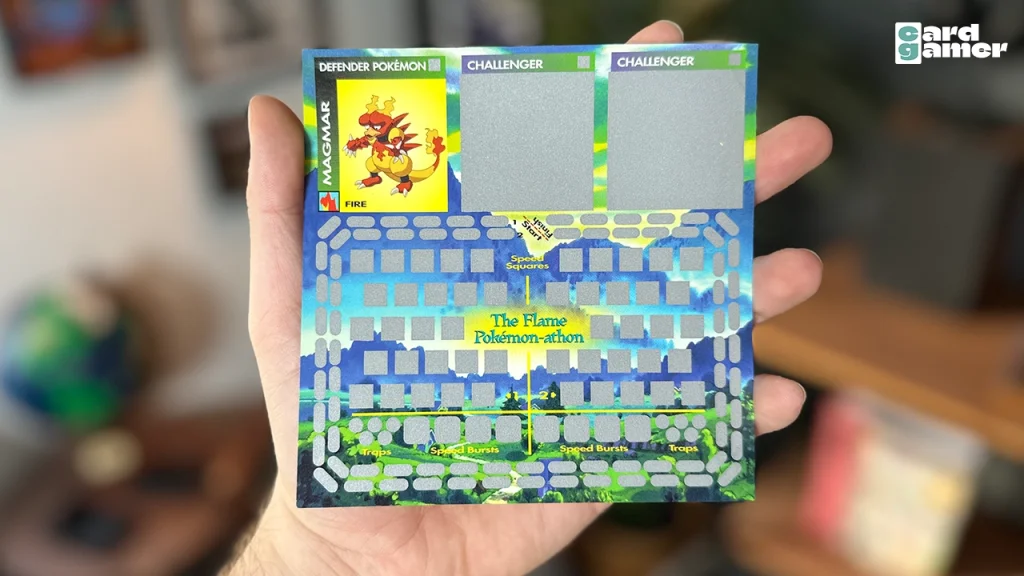
This one is a straightforward race game for two players, but what’s really striking about this (and the other Pokemon Scratchees titles) is that the packaging, along with the general design of the cards themselves, felt like a real step up from Decipher’s previous Scratchees products.
The cards are a bit more appealing in their imagery, with great pictures of the first generation Pokemon in large panels on them too.
The Flame Pokemon-athon features flying, dragon, fire, electric, and bug Pokemon.
Tower of Terror
The Tower of Terror version of Pokemon Scratchees is a guessing game, with light deduction and push your luck elements.
It features numerous normal, psychic, ghost, poison and grass Pokemon, with each player’s Pokemon revealed (just as in The Flame Pokemon-athon) by scratching off a large panel at the top of the card.
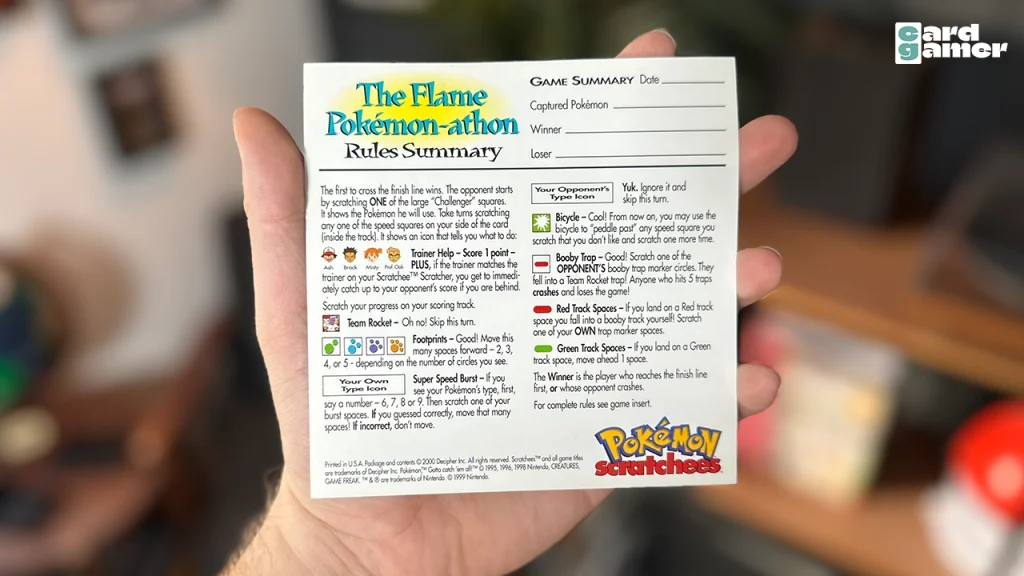
Once more, the visual design and images of Pokemon really helped this to stand out alongside previous Scratchees games.
The Ultimate Test
With the genius tagline ‘Gotta Scratch ‘em all!’, the third game in the Pokemon Scratchees range is The Ultimate Test.
Featuring fighting, rocks, ground, and water Pokemon, The Ultimate Test is a battle arena game, with players scratching spaces and scoring points depending on how close the revealed symbol is to their own power type.
Scratchees: Beyond 2000
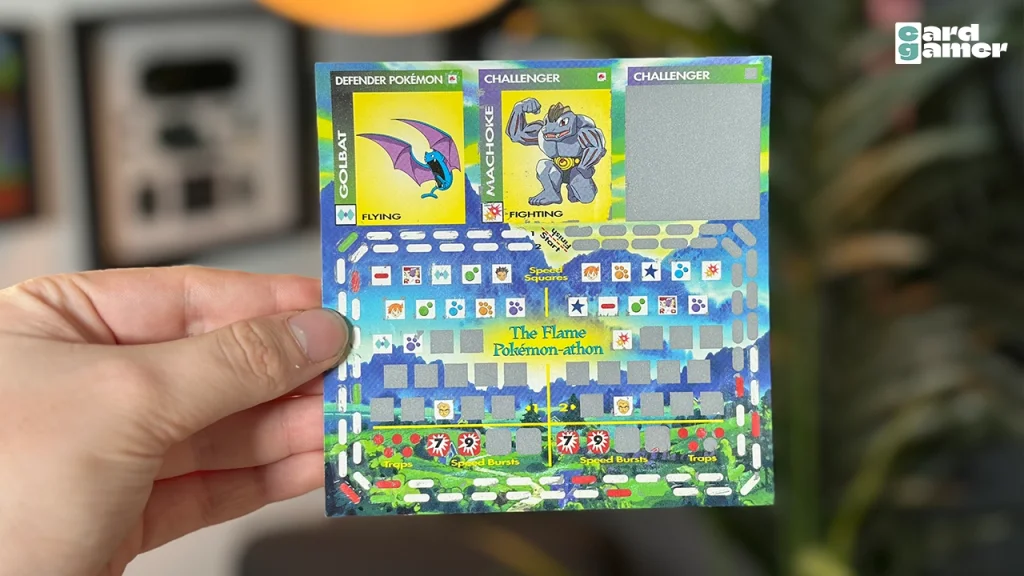
Unfortunately, the Pokemon Scratchees seem to have been the last gasp for this simple, but strangely compelling card game format.
These days, they can be found reasonably easily on eBay, but sets such as the Pokemon Scratchees are much scarcer and can demand pretty high prices!
Though Scratchees may be a thing of the past and seeing them again is undoubtedly quite the nostalgia trip for people of a certain age, these disposable, one-off card games are unlikely to make a comeback.
Especially given that, if kids (or indeed adults) want a quick game of something on the move, smartphones and other handheld gaming devices (including, for example, the Nintendo Switch) provide countless opportunities for this.
Even if mobile phones and portable consoles such as the Switch do cost an awful lot more than the silver coated pieces of cardboard, there’s no getting around the fact that Scratchees do feel pretty antiquated in this day and age.
Still, if you do manage to get your hands on these often clever scratchcard games, we here at Card Gamer hope you enjoy rediscovering them, or indeed trying them out for the very first time!


